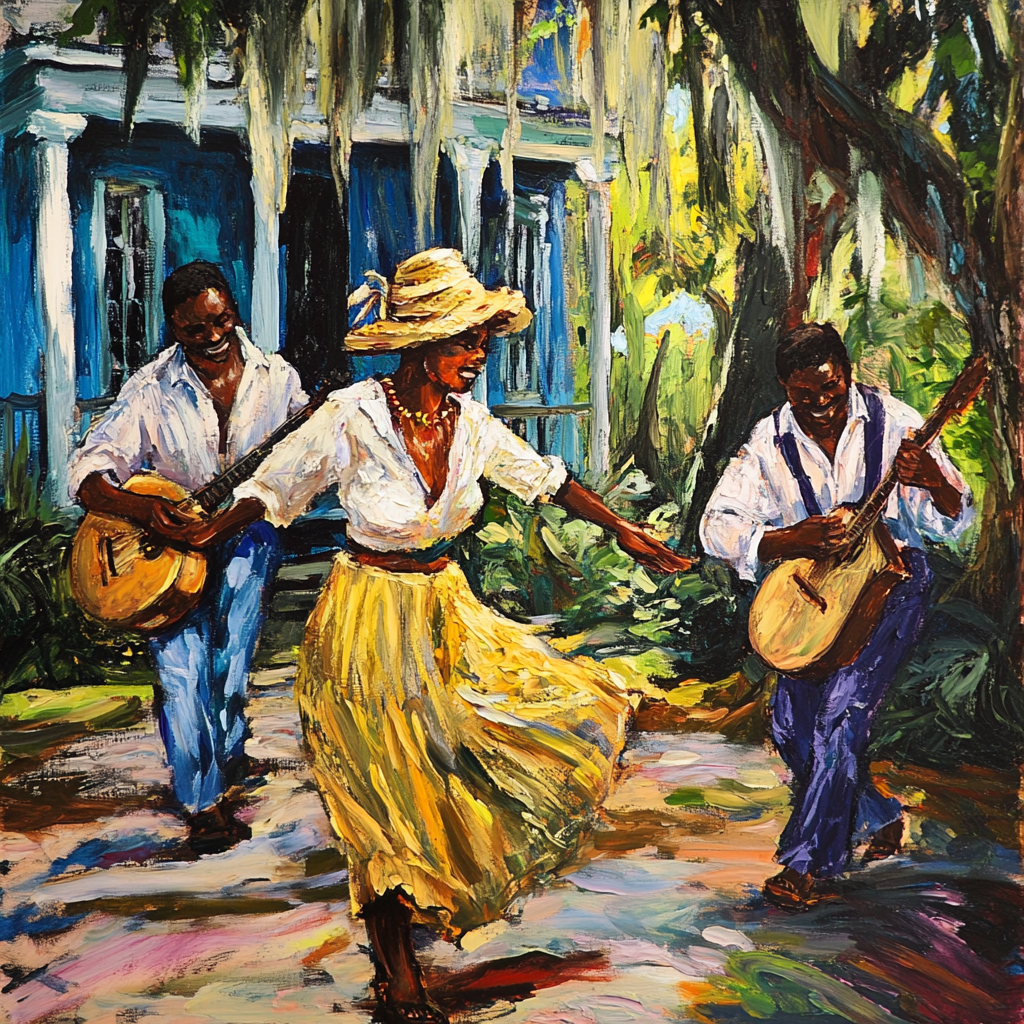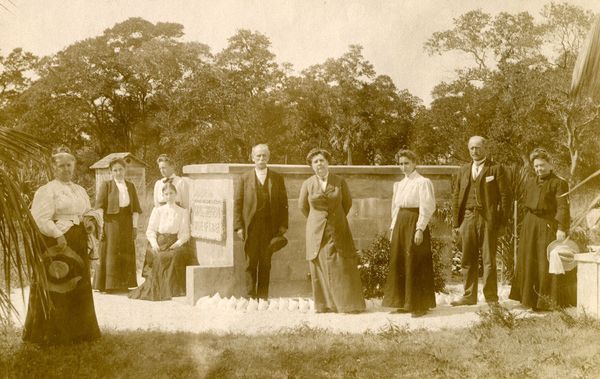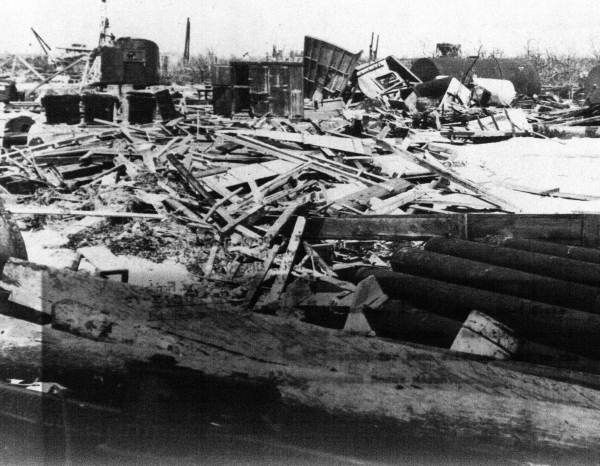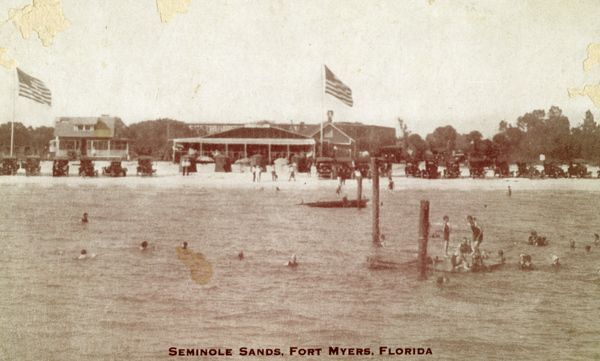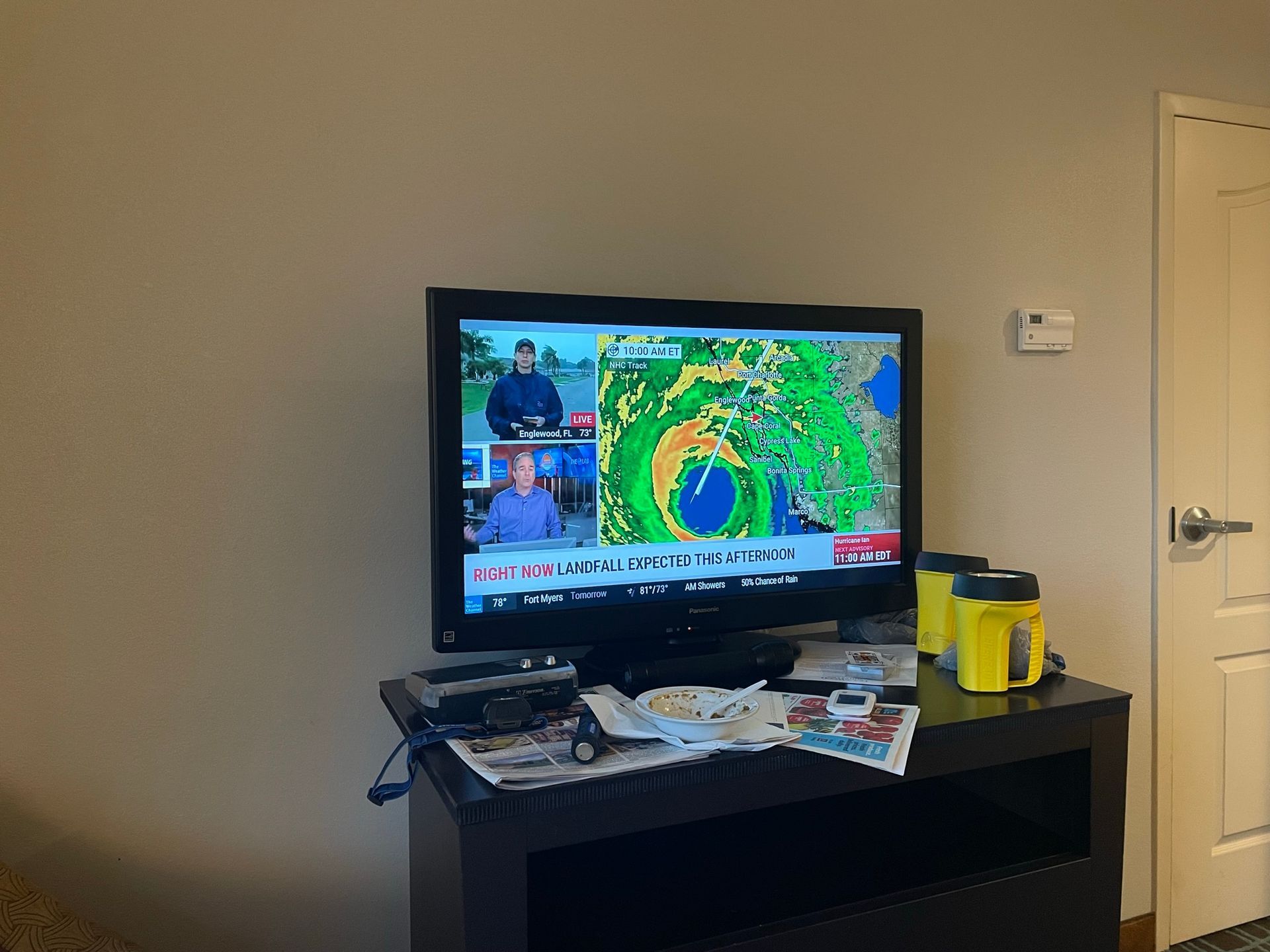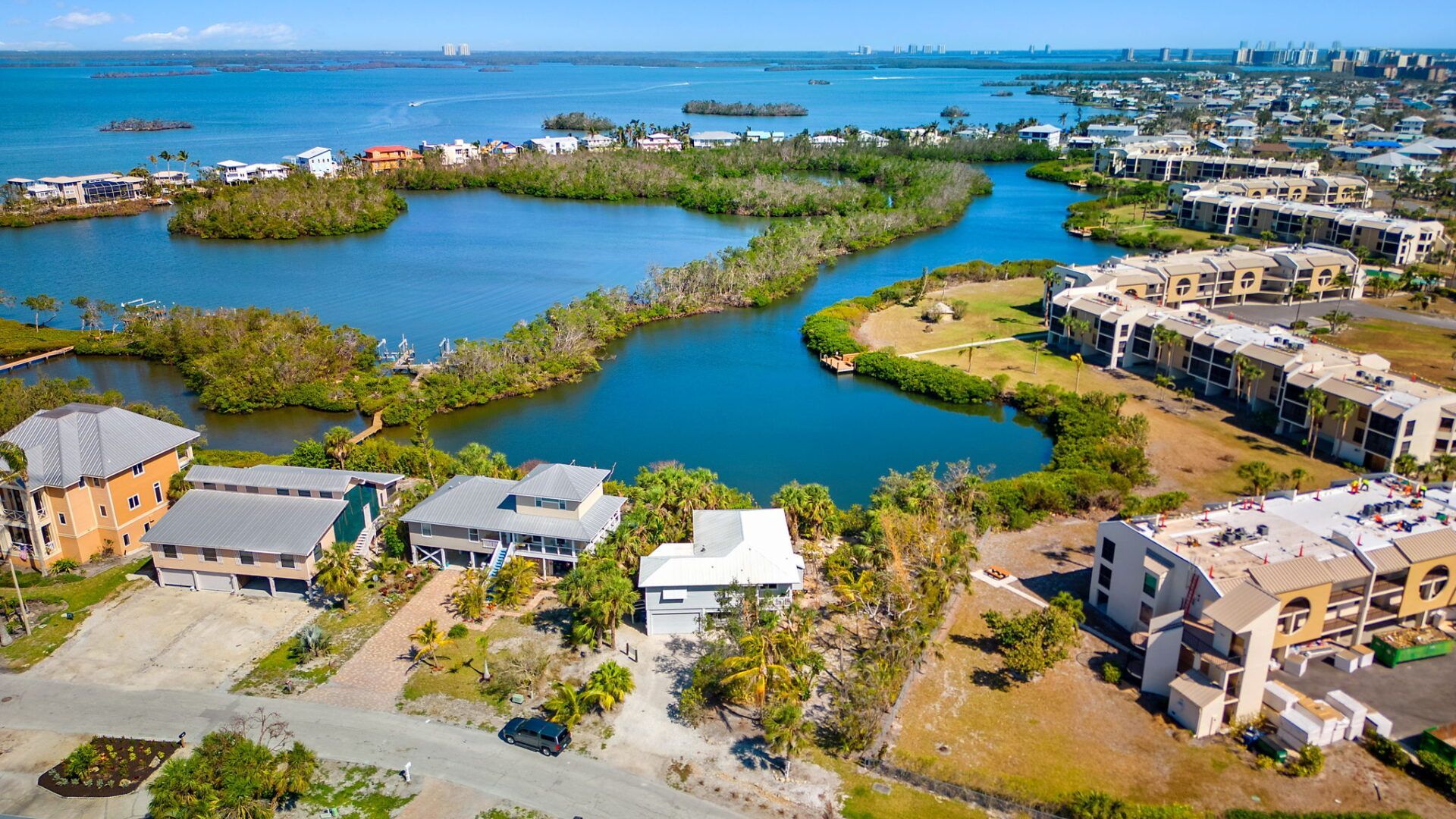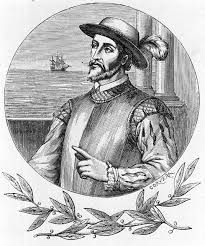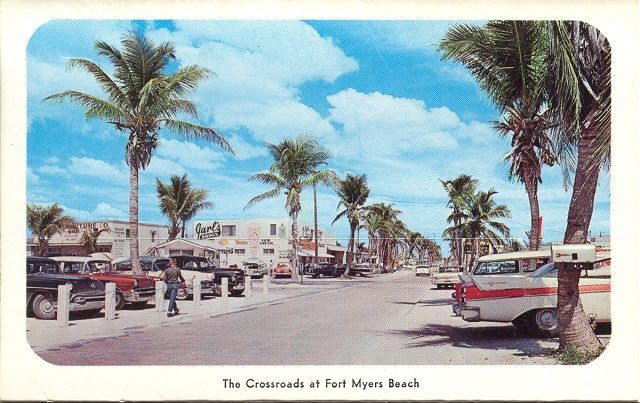Has it Ever Snowed in Florida?
As we hunkered down to prepare for the near freezing temperatures this weekend, I decided to do a little research into other times in our state’s history when the mercury dipped down into the teens.
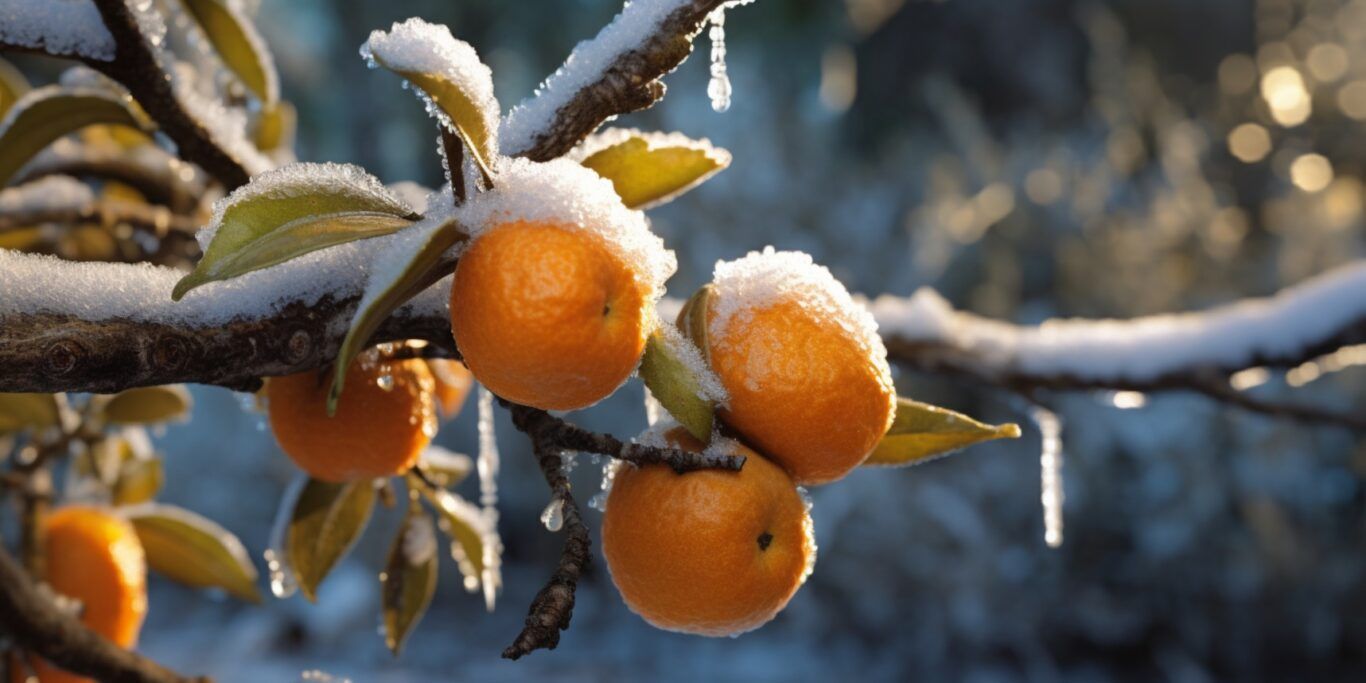
Oranges froze on the trees.
Over the past 150 years, numerous severe cold outbreaks have affected Florida. According to the Climate Center at Florida State University, it does snow in Florida. The first documented account of snow in Florida was reported in 1774. Snow up to three inches deep was reported in many Panhandle communities during the Great Arctic Outbreak. Snow flurries were reported as far south as Fort Myers. In fact, since 1886, there have been more than 80 months in which at least a trace of snow has been reported somewhere in the state.
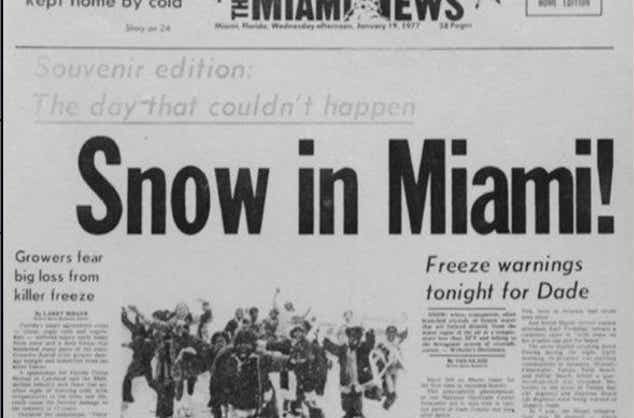
January 19, 1977… the day it snowed in Miami.
The most famous freeze in Florida history was called the Great Freeze. This event occurred during the winters of 1894 and 1885. The first freeze hit on December 29 when the thermometer dipped down to a cool 18 degrees in Orlando and devasted the citrus crops all over the state. The second freeze came in February 1895 and the effects were felt as far south as Fort Myers Beach where it put an end to tomato farming on the island.
James Bratt was granted the second patent on Estero Island in 1895. A doctor from New York, Bratt was one of the few settlers who set up his homestead at the north end of the island where he started a tomato farm on 150 acres at Bowditch Point. Bratt worked hard and had a successful first harvest. However, when the Great Freeze hit, temperatures in South Florida dipped to 38 degrees damaging much of Bratt’s tomato crop. However, Bratt did not give up and continued to farm until February 1899 when a cold front known as the Great Arctic Outbreak caused temperatures to break records when -2 degrees F was recorded on February 13, 1899. This time, Bratt lost his entire tomato crop and gave up farming for good.
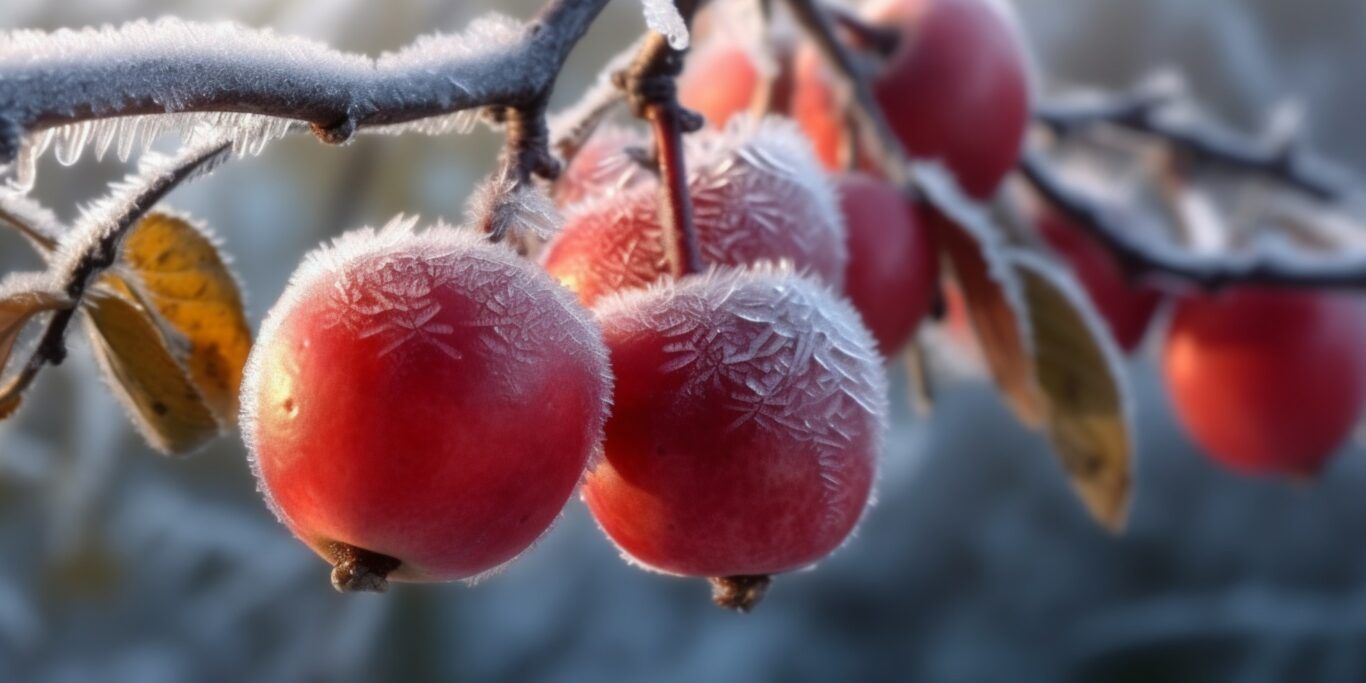
Ice storm trees and berry fruit freeze in winter, AI Generated
Almost eighteen years passed before another freeze hit Florida. This freeze occurred on February 2-6 and was the most serious freeze between 1899 and 1934. In 1934, another freeze hit Florida on December 12-13 and was so severe that it led to the creation of the Federal-State Frost Warning Service.
Another six years went by before a major freeze affected the state.
This freeze occurred at the end of January 1940 and saw the coldest temperatures since 1899. The record stood until 1957 when another freeze broke the 1940 record. In the decades of the 1960s, 1970s, and, especially, the 1980s, Florida had six freeze events which resulted in multi-million-dollar losses to the citrus industry. Since the 1990s, South Florida has not seen nearly as many freezes as in the past. In fact, January 11, 2010 was also the last time Fort Myers recorded a temperature at or below freezing.
On a personal level, I don’t think these freezing temperatures had much of an impact on my life. I do remember one freeze, probably in the 60s when my turtle died because I forgot to take him inside and the water froze. I also remember the morning the space shuttle exploded when the temperature in Southwest Florida dipped into the 30s.
Over the past two decades, it has become obvious that our winters are getting warmer with fewer days when temperatures get near the freezing point. So, for now, I am not complaining about this cold front. Soon, it will be past us and we will be enjoying the 80-degree winter weather that we have become accustomed to over the past few years.
